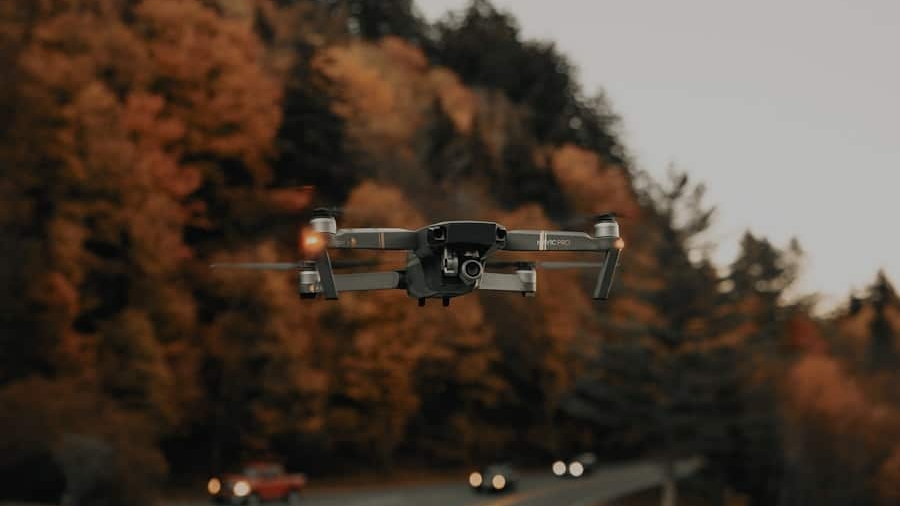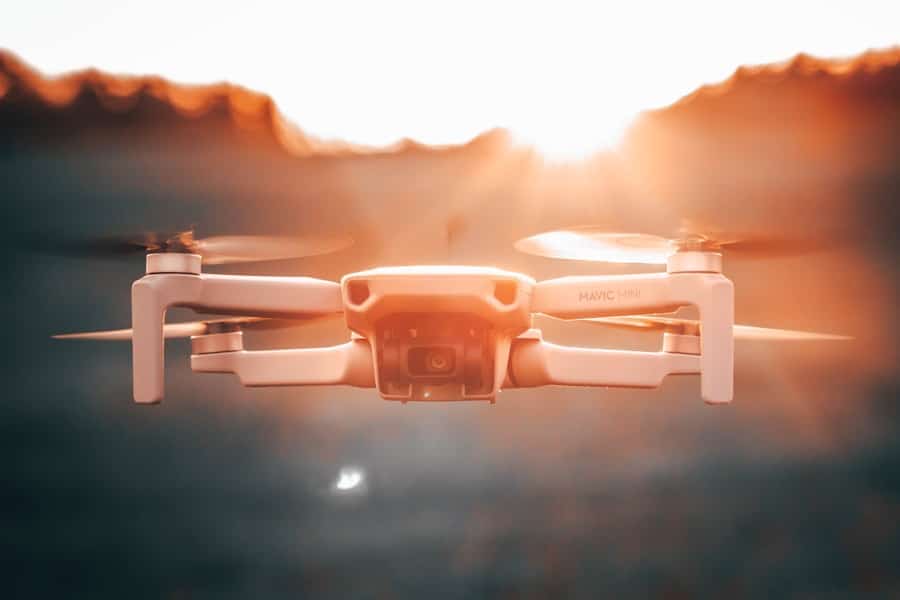The advent of delivery drones has revolutionized logistics and supply chain management, offering unprecedented speed and efficiency in the transportation of goods. As businesses increasingly adopt this technology, the need for effective fleet management becomes paramount. Predictive fleet management for delivery drones leverages advanced analytics and artificial intelligence (AI) to optimize operations, enhance performance, and reduce costs.
This approach not only streamlines the management of drone fleets but also ensures that they operate at peak efficiency, thereby maximizing their potential in the fast-evolving landscape of logistics. Predictive fleet management encompasses a range of strategies and technologies designed to anticipate and address operational challenges before they arise. By harnessing data from various sources, including drone telemetry, environmental conditions, and historical performance metrics, fleet managers can make informed decisions that enhance the overall effectiveness of their operations.
This proactive approach is particularly crucial in the context of delivery drones, where timely and reliable service is essential for customer satisfaction and business success. As the industry continues to grow, understanding the intricacies of predictive fleet management will be vital for companies looking to maintain a competitive edge.
Key Takeaways
- Predictive fleet management for delivery drones is revolutionizing the logistics industry by leveraging AI technology to optimize operations.
- AI plays a crucial role in fleet management for delivery drones, enabling real-time decision-making and efficient resource allocation.
- Route optimization for delivery drones is significantly improved with AI, leading to faster and more cost-effective deliveries.
- AI is instrumental in predicting maintenance needs for delivery drones, reducing downtime and ensuring optimal performance.
- AI has a significant impact on fuel efficiency and battery management for delivery drones, leading to longer flight times and increased productivity.
The Importance of AI in Fleet Management for Delivery Drones
Accurate Forecasting and Resource Allocation
AI enables more accurate forecasting of operational needs, allowing fleet managers to allocate resources more effectively. For instance, AI can analyze historical flight data to predict peak delivery times, enabling companies to adjust their drone deployment strategies accordingly.
Optimized Decision-Making
AI enhances decision-making processes by providing actionable insights derived from complex datasets.
Improved Efficiency and Cost Savings
This level of analysis not only improves efficiency but also reduces operational costs by minimizing delays and maximizing the utilization of drone assets. As a result, businesses can achieve higher levels of service while maintaining profitability, underscoring the critical importance of AI in modern fleet management.
How AI Improves Route Optimization for Delivery Drones
Route optimization is one of the most significant applications of AI in the management of delivery drone fleets. Traditional routing methods often rely on static algorithms that do not account for real-time variables such as traffic congestion or sudden changes in weather conditions. In contrast, AI-driven systems utilize dynamic algorithms that continuously adapt to changing circumstances, ensuring that drones take the most efficient paths to their destinations.
For example, an AI system can analyze live traffic data and reroute drones in real-time to avoid congested areas or obstacles. This capability not only shortens delivery times but also reduces energy consumption, as drones can fly more direct routes. Additionally, AI can factor in customer preferences and historical delivery patterns to create personalized delivery experiences.
By optimizing routes based on a multitude of variables, companies can enhance customer satisfaction while simultaneously improving operational efficiency.
The Role of AI in Predicting Maintenance Needs for Delivery Drones
Predictive maintenance is another critical area where AI significantly impacts fleet management for delivery drones. By analyzing data from various sensors embedded within the drones, AI systems can monitor the health and performance of each unit in real-time. This continuous monitoring allows for the early detection of potential issues before they escalate into costly failures or downtime.
For instance, if a drone’s battery performance begins to decline or if its motors show signs of wear, AI algorithms can alert fleet managers to schedule maintenance proactively. This approach not only extends the lifespan of the drones but also minimizes disruptions in service caused by unexpected breakdowns. Furthermore, by maintaining a comprehensive database of maintenance records and performance metrics, AI can help identify trends that inform future purchasing decisions regarding drone components or models.
This data-driven approach ensures that fleets remain operationally efficient and cost-effective over time.
AI’s Impact on Fuel Efficiency and Battery Management for Delivery Drones
Fuel efficiency and battery management are critical considerations in the operation of delivery drones, particularly as companies strive to reduce their environmental impact and operational costs. AI plays a vital role in optimizing these aspects by analyzing flight patterns and energy consumption data to develop strategies that enhance overall efficiency. For example, AI algorithms can determine the optimal altitude and speed for drones during different phases of flight, balancing energy consumption with delivery speed.
Additionally, AI can predict battery life based on usage patterns and environmental conditions, allowing operators to schedule recharging or battery replacements more effectively. This proactive approach not only improves operational efficiency but also contributes to sustainability efforts by reducing energy waste.
The Use of AI in Predicting Weather Conditions and Its Effect on Delivery Drone Operations
Weather conditions are a significant factor influencing the operation of delivery drones. Adverse weather can lead to delays or even cancellations of deliveries, impacting customer satisfaction and operational efficiency. AI enhances fleet management by providing accurate weather predictions that inform decision-making processes related to drone operations.
By integrating data from meteorological sources with real-time flight information, AI systems can forecast weather conditions that may affect drone flights. For instance, if a storm is predicted along a planned delivery route, the system can automatically reroute drones or delay flights until conditions improve. This capability not only ensures the safety of the drones but also protects valuable cargo from potential damage due to inclement weather.
Furthermore, by analyzing historical weather data alongside operational performance metrics, AI can help companies develop more resilient logistics strategies that account for seasonal variations in weather patterns.
AI’s Role in Enhancing Safety and Security Measures for Delivery Drones
Safety and security are paramount concerns in the operation of delivery drones, particularly as they navigate urban environments populated with people and infrastructure. AI contributes significantly to enhancing these measures through advanced monitoring systems and predictive analytics that identify potential risks before they materialize. For example, AI-powered collision avoidance systems utilize real-time data from onboard sensors to detect obstacles in a drone’s flight path.
By processing this information rapidly, the system can make split-second decisions to alter the drone’s course or altitude to avoid collisions with other aircraft or structures. Additionally, AI can analyze historical incident data to identify high-risk areas or times for drone operations, allowing fleet managers to implement targeted safety protocols or adjust flight schedules accordingly. Moreover, security measures are bolstered through AI’s ability to monitor drone activity for signs of tampering or unauthorized access.
By employing machine learning algorithms that detect anomalies in flight patterns or operational behavior, companies can safeguard their assets against theft or malicious interference. This comprehensive approach to safety and security not only protects the drones themselves but also ensures the safety of individuals on the ground.
The Future of AI in Predictive Fleet Management for Delivery Drones
As technology continues to evolve at an unprecedented pace, the future of AI in predictive fleet management for delivery drones holds immense potential. Innovations in machine learning algorithms and data analytics will further enhance the capabilities of fleet management systems, enabling even more sophisticated predictive models that account for an ever-expanding array of variables. One promising area is the integration of AI with emerging technologies such as 5G connectivity and edge computing.
These advancements will facilitate faster data transmission and processing capabilities, allowing for real-time decision-making that is crucial for dynamic environments like urban logistics. Additionally, as drone technology itself advances—such as improvements in battery life and payload capacity—AI will play a critical role in optimizing these new capabilities within fleet management frameworks. Furthermore, as regulatory frameworks evolve to accommodate the growing use of delivery drones, AI will be instrumental in ensuring compliance with safety standards and operational guidelines.
By automating compliance monitoring through advanced analytics, companies can streamline their operations while adhering to legal requirements. In summary, the integration of AI into predictive fleet management for delivery drones is set to transform logistics operations significantly. As businesses continue to embrace this technology, they will unlock new levels of efficiency, safety, and customer satisfaction that were previously unattainable.
The future promises exciting developments that will further solidify the role of AI as an indispensable tool in managing drone fleets effectively.
In addition to exploring the role of AI in predictive fleet management for delivery drones, digital artists may also be interested in the article The Best Free Drawing Software for Digital Artists in 2023. This article discusses various software options that can enhance the creative process for artists working in a digital medium.
FAQs
What is predictive fleet management for delivery drones?
Predictive fleet management for delivery drones involves using artificial intelligence (AI) and data analytics to forecast and optimize the performance of a fleet of drones for delivery operations.
How does AI play a role in predictive fleet management for delivery drones?
AI plays a crucial role in predictive fleet management for delivery drones by analyzing historical data, weather patterns, traffic conditions, and other relevant factors to predict the most efficient routes and schedules for drone deliveries.
What are the benefits of using AI in predictive fleet management for delivery drones?
The benefits of using AI in predictive fleet management for delivery drones include improved delivery efficiency, reduced operational costs, optimized route planning, enhanced safety measures, and better decision-making based on real-time data.
What are the challenges of implementing AI in predictive fleet management for delivery drones?
Challenges of implementing AI in predictive fleet management for delivery drones include data privacy concerns, regulatory compliance, technological limitations, and the need for continuous updates and maintenance of AI algorithms.
How can AI improve the performance of delivery drones in fleet management?
AI can improve the performance of delivery drones in fleet management by analyzing data to predict maintenance needs, optimize energy consumption, reduce delivery times, and enhance overall operational efficiency.



